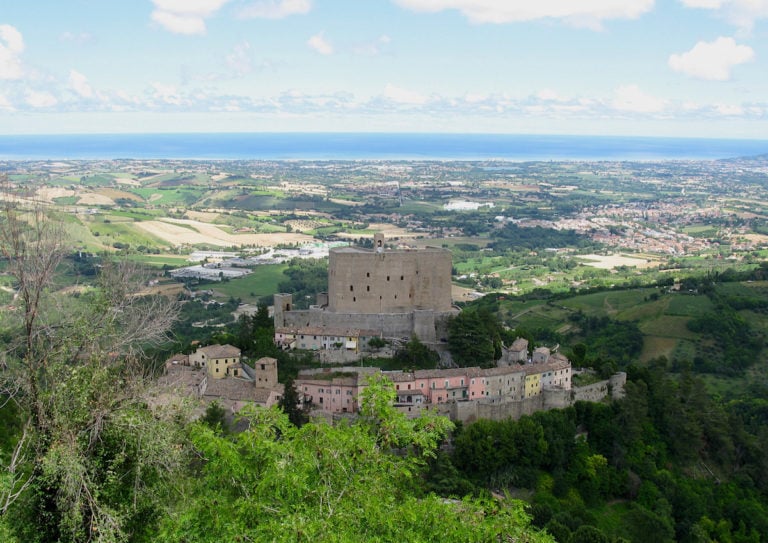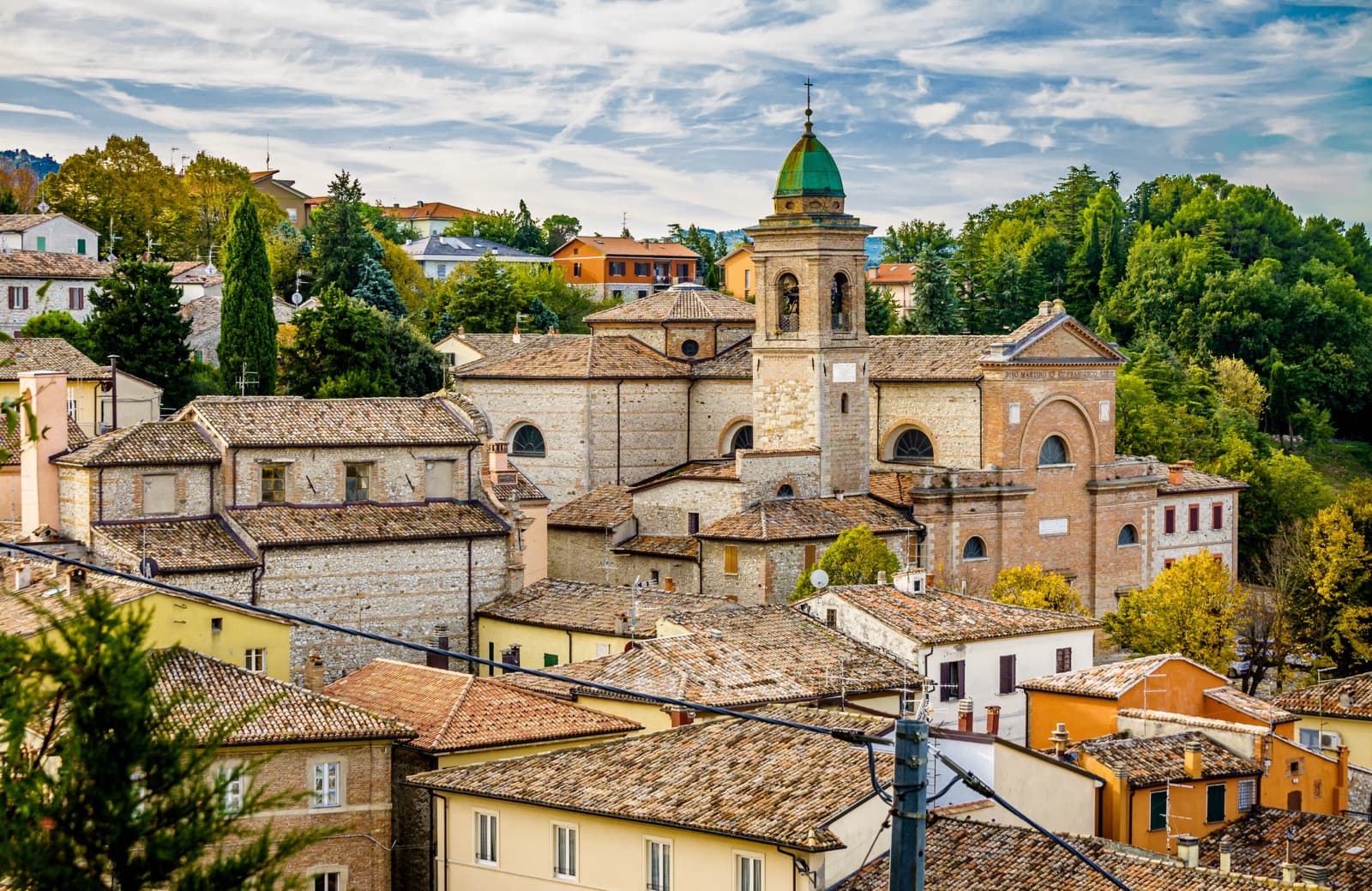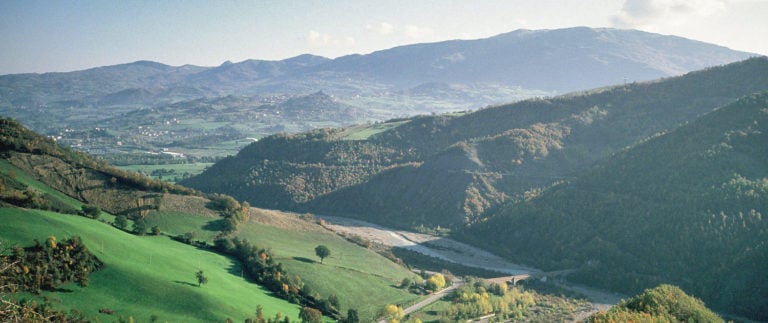The Rimini hinterland immediately brings to mind fascinating hilly landscapes in which small villages such as San Leo, Verucchio and Montefiore Conca stand out, as well as many nature routes to be travelled by bicycle or on foot.
Not everyone knows that this area holds an ancient history associated with the presence of two watercourses, the Marecchia and the Conca, whose traces have survived to the present day.
We are talking about the numerous watermills that, until not many decades ago, used the force of the water to produce flour, grinding the grain of a land that was once mainly dedicated to agriculture.
This history is all about small communities and millers, guardians of precious knowledge that has been handed down from generation to generation. Just think that until a few decades ago there were as many as 165 mills in the Marecchia Valley, while in the Conca Valley there were 66.
Today, there are only a handful of mills left along both rivers, from the mouth to the source. If some – very few – have remained in operation, others have turned into restaurants, accommodation facilities and museums.
The mills of the Marecchia Valley
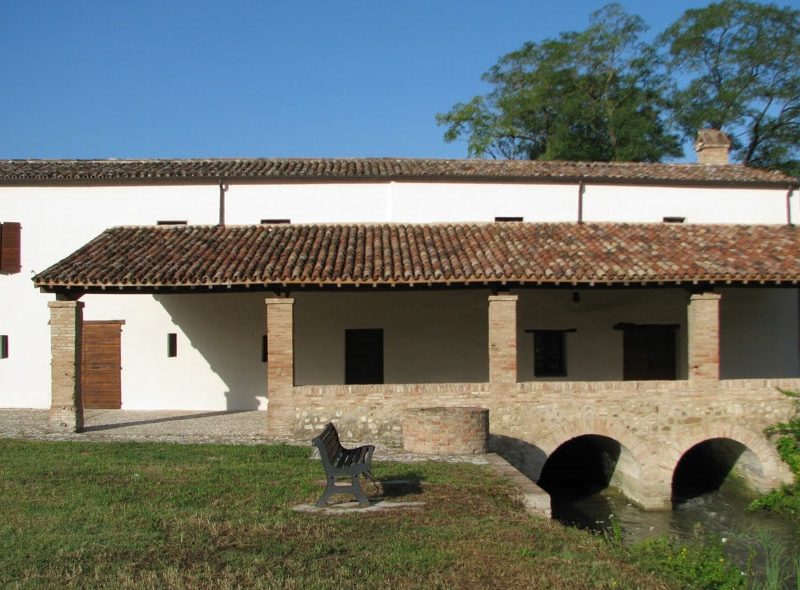
Considered the natural watershed between northern and central Italy, the Marecchia Valley stretches behind the city of Rimini and reaches as far as the Apennines on the border with Tuscany. The valley follows the course of its main river, the Marecchia, which for centuries has been an essential source of life and energy for the inhabitants of the area.
As we mentioned earlier, the numerous mills of the Marecchia Valley were located along the entire course of the river. We recommend that you begin your visit at the Sapignoli Museum watermill, currently in operation.
Inside, you will find various exhibition rooms created in the old mill premises – the storerooms, stables and millstone room – that bear witness to the importance of the Marecchia Valley for the noble Malatesta family, so much so that it was defined as the granary of the seigniory. The museum also includes the Viserba Ditch, which once powered the mill.
The Sapignoli Museum is located in the hamlet of Poggio Berni, in the municipality of Poggio Torriana, about twenty kilometres from Rimini, which is distinguished by its high number of mills. A document dating back to 1588, in fact, confirms the presence of as many as five facilities: a decidedly high number for such a small area.
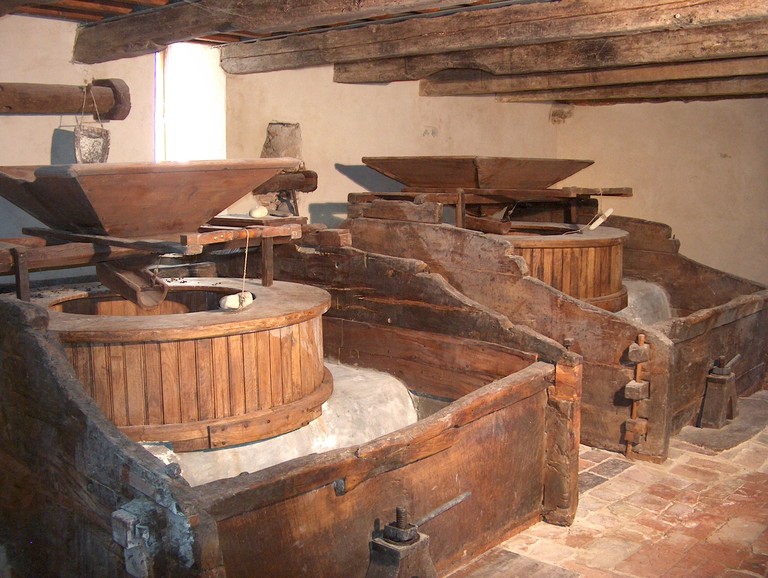
In addition to the Sapignoli Mill, the five-mill network of Poggio Berni also included the Sore Mill, today known as the Moroni Mill, a hydraulic work dating back to the 17th century and still operating, although production ceased around 1955.
Upon entering the mill, you can admire three ancient millstones, as well as documents and various materials relating to the art of milling and to the wheat cycle.
There were many mills not only on the Marecchia River, but also on one of its tributaries, the San Marino Torrent. This small watercourse, which runs through the territory of the Republic of the same name, housed six mills, now almost all abandoned, which passed water to each other.
The mills of the Conca Valley
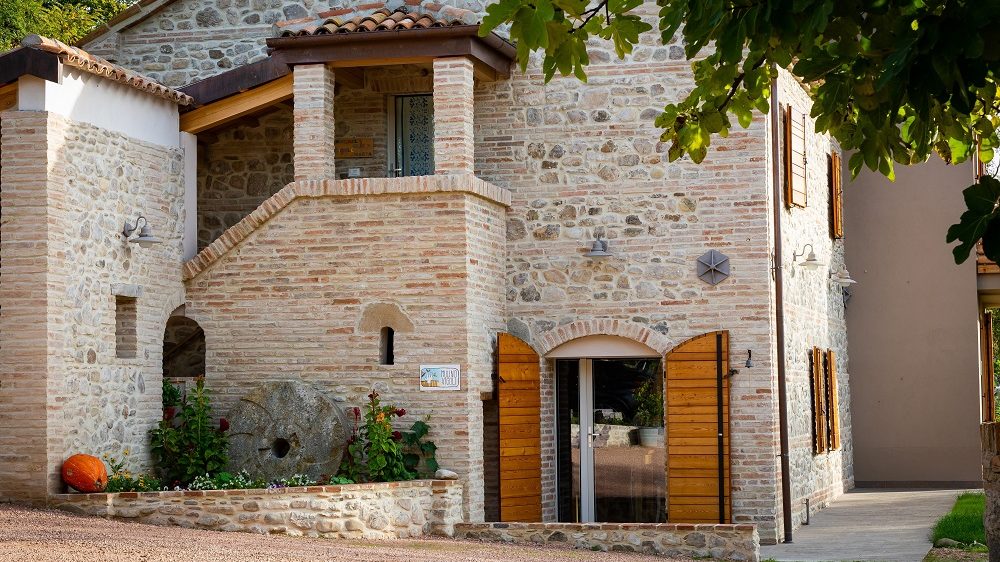
The Conca river valley still shows traces of a flourishing milling past too. In this border area between Rimini in Emilia-Romagna and Pesaro-Urbino in the Marche region, there were once 66 mills that served the many villages spread inland between Riccione and Cattolica.
The mills in the Conca Valley were powered by the so-called fosse (ditches), artificial canals that ran parallel to the river and were also used to irrigate the fields. Now abandoned or converted into homes and restaurants, the mills were once the protagonist of legends that claimed they were inhabited by goblins. It is said that at night, while the millers slept, goblins operated the millstones and produced flour for themselves and for the fairies.
Like the Marecchia Valley, the Conca Valley is also dotted with ancient mills. Some were built by the Malatesta themselves, such as the Rossi Mill in Santa Maria Maddalena and the 15th-century Malatesta Mill with two pits.
In San Clemente, near Morciano, we can find the Casarola Mill, a 1726 building housing a mill, sawmill and dwelling, the Trado Mill, currently used as a private home, and the Vigoli Mill, still in operation, with a shelter for animals and a store for tools and sawmill timber.
Returning towards the coast, one of the closest mills to the sea is the Mulino Calce, operating until the 1960s and now converted into a restaurant, surrounded by a small park decorated with hedges, flower beds and fountains.
Author

Maria Grazia Masotti
An eternal dreamer, but I try to stay grounded. I was raised in the countryside but I love big cities. I’m always ready for a trip, as long as it’s sustainable.
You may also like
Emilia-Romagna for kids: Rimini and surroundings
by Elisa Mazzini /// January 13, 2023
Dolce Vita in Valmarecchia: an itinerary among hamlets and hills
by Elisa Mazzini /// June 7, 2016

Interested in our newsletter?
Every first of the month, an email (in Italian) with selected contents and upcoming events.
